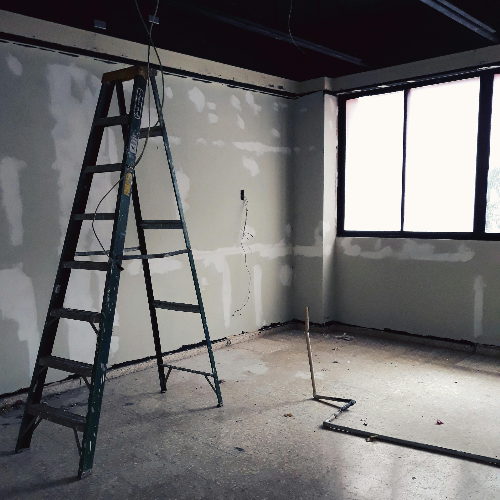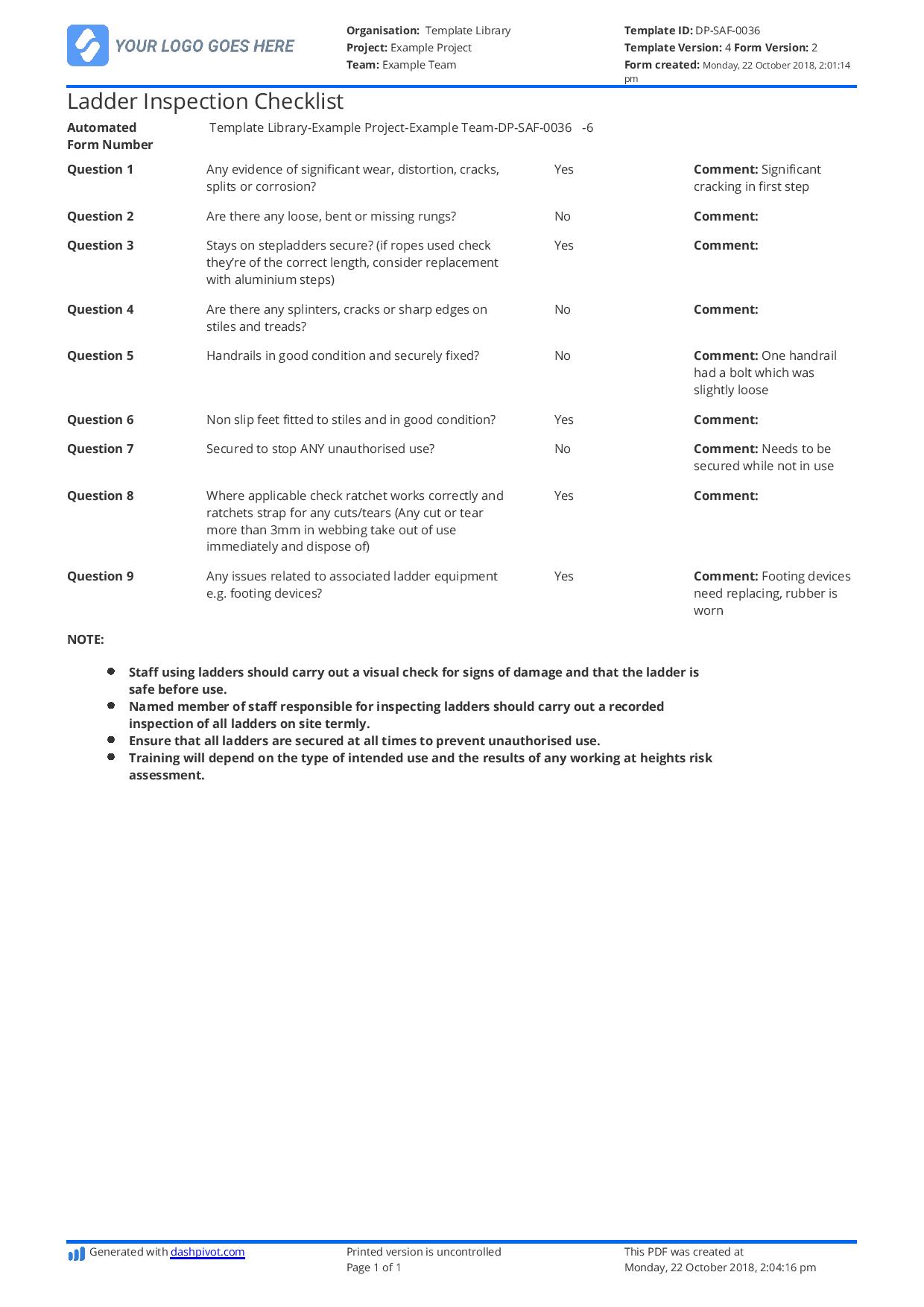Dashpivot Article – IHSA Ladder Safety
IHSA Ladder Safety
In this article, we will be focusing on the IHSA ladder safety, guidelines and best practices in identifying, inspecting, and using them as promoted by the Infrastructure Health & Safety Association (IHSA).

Industrial and construction jobs involve a variety of risks and hazards. It’s pretty obvious given the number of standards, regulations, and best practices mandated by the government and regulatory bodies that one of the major concerns, although it may seem simple and unlikely, is ladders.
It’s fairly easy to overlook the risks involving ladders because it’s such a common every-day use in the job, and the Infrastructure Health & Safety Association (IHSA) is conscious that falls from ladders is common to all trades and is one of the top causes of injuries.
IHSA Ladder Use Safety Guidelines and Standards
The IHSA has laid out the major causes of falls in their Health, Safety Manual: Equipment: Ladders, and they’ve stressed multiple times to always plan ahead the safest ways as much as possible if work can’t be completed on a ground level or a finished floor of a structure. There are other tools to use when working at heights or elevated structures, like using platforms, scaffolding, and powered elevating work platforms (PEWPs), but if it is decided by the supervisor, manager, or safety personnel that a ladder is the best one to use, then it’s key to identify first the risks and hazards involved in using a ladder in that specific area/work before doing any actual work. It may just be a ladder, but in high-risk work environments in the industrial and construction industries, there are still hazards involved.
The guidelines being referred to about identifying and conducting risk assessments is the Ladder Use in Construction Guideline, produced by the IHSA itself, that is based from the Occupational Health and Safety Act (OHSA) and its regulations. This document aids employers and businesses when creating or drafting their company and safety policies for ladder use, and it should be the top priority that this guideline and document be followed. Remember, each type of work or activity involving ladders differ from one another, so regularly conduct risk assessments, be vigilant, and stay compliant.
Ladder Standards and Specification Requirements
In Canada, both fixed and portable ladders are used in the infrastructure and construction industries, still dependent on the type and risk severity of the elevated task or activity. All crews and workers in both industries heavily rely on both types of ladders, and they should know which ones to use for a specific type; for example, for fixed ladders, they’re mostly used to attach to storage tanks and communication towers, where workers need frequent access to those locations (because it’s not ideal to bring to and fro portable ladders every time you need to go to that location), and for portable ladders where the elevated task or activity is just temporary like roofing jobs, electrical installations, and/or plumbing.
According to IHSA’s Ladder Health, Safety Manual, the standard manufacturing specification is being followed for most of the types of ladders (fixed ladders), but the Canadian Standards Association (CSA) Standard Z11-18 specifies requirements on portable ladders (step, extension, and combination ladders) that includes material specs, load testing, dimensional requirements, slip resistance, and proper tags.
Ladder Hazard Risk Assessment (HRA)
As mentioned, a ladder hazard risk assessment is needed to know the risks before using a ladder, but take note, a ladder HRA is only conducted when the work or task involves using portable ladders and not the fixed ones. At Appendix A of the Ladder Use in Construction Guide document earlier, a risk assessment checklist is provided as a general guide in performing ladder risk assessments on site.
On a separate note, the Construction Projects Regulation (213/91) gives guidelines on safe installation of permanent/fixed ladders. For reference as well, the IHSA has provided programs to easily conduct HRAs or JSAs in their official website.
IHSA’s core best practices and general guide to ladder safety
Select your right ladder: Make sure that the portable ladder you’re using is well within the standards of CSA ladder grades and load ratings (Grade 1AA for special duty, Grade 1A for extra heavy duty, Grade 1 for heavy duty, Grade 2 for medium duty, and Grade 3 for light duty). Check the total weight you’ll be carrying (including your own weight) to determine the load rating, and select the proper height for the height of work you will be doing when you use the ladder and choose properly.
Inspect it before using: It’s always best practice to check anything you will be using before actually using them. Check for any visible damages, and functional or operational issues, like cracks, missing feet, loose parts (bolts or screws), or bent rungs. Never use a ladder that is damaged, make sure that they’re tagged out and/or removed from service, and everyone is informed that it’s not good for use.
Identify the hazards and know how to prevent them: Conduct a ladder hazard risk assessment or job hazard analysis before every ladder-related high-risk job, write them all down, and set the appropriate control measures to keep you, everyone, and the tools safe. It’s different for each job, so conduct one for every activity.
Set up and use the ladder correctly: You’ve done the necessary precautions and assessment, so now it’s up to you to use it properly. The best practice being used around is the 3-Point Contact Ladder Safety rule.
Maintain ladders and repair them when necessary: To avoid further costs on replacements, it’s best to properly maintain ladders that you regularly use to increase their lifespan. Ladders that are subject to being repaired should be tagged and must not be used, not until the repairs are done. It’s also common practice that whoever tagged the ladder as out of service should also be the one to remve the tag. As indicated in the Health, Safety Manual, the tag “DANGER - DO NOT USE” should be printed in capital bold letters.
These IHSA guidelines are similar to the general Ladder Safety Procedures when using ladders in high-risk industries.
Ladder Inspection safety documentation
One of the most important aspects of IHSA ladder safety and ladder safety in general is safety documentation, as it both guides workers through standard ladder safety processes, and demonstrates adherence and compliance to safety regulations.
See below for an example of this type of safety documentation.

Use this free Ladder Inspection Checklist format for free
Using digital documents for IHSA ladder safety
We’ve discussed about the best practices to do to comply with the IHSA ladder safety guidelines, but to better improve the effectivity of these practices, going digital can streamline the entire process, keep all documents protected in a single platform, make them accessible via mobile device, tablet, or personal computer, and make safety easily accessible and doable for everyone.
To start, you can use this structured Ladder Inspection Checklist before using your ladders. It comes prebuilt with sections needed for your inspection needs, but is also easily editable to match the IHSA ladder safety guidelines or your company safety policies. Instead of walking around with a physical paper when you’re doing pre-use inspection, just take out your phone, take photos to include in the checklist, and have a digital sign off.
And another one, prior to starting working during the day, gather all of the workers and conduct a Toolbox Talk about Ladder Safety using this digital document. Place all necessary fields using a drag-and-drop form builder, and include digital sign offs or Scan Sitemate ID field as the attendance.
Create automated processes for IHSA ladder safety
Need to keep track of all the every-day industrial ladders you use in the field? Use this digital Ladder Register, make it easier to know which ladders are appropriate to use for a specific load rating and height, if they’re tagged or under service, and many more details that you can add digitally.
All ladder-related documents are saved in a single place so that you and your team can easily find anytime, anywhere. Share documents from being on the field to your team members in the office, easily sync, and flawlessly comply with the IHSA ladder safety guidelines.

Safe Work Method Statement for Ladders
Don't get complacent about ladder safety and the everpresent dangers of working at heights. Ensure everyone is using and working around ladders the right way.

Toolbox Talk Ladder Safety
Keep any work involving ladders safe by running this Toolbox Talk Ladder Safety.

Safe Work Method Statement for Elevated Work Platform template
Working from heights + plant and equipment = hazards. Mitigate the chance of safety issues with this template.